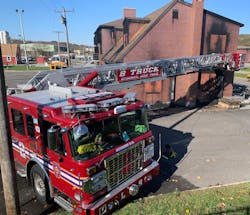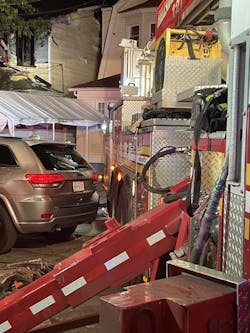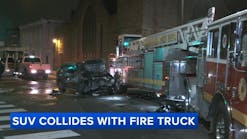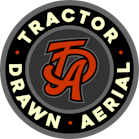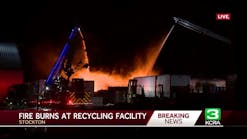It’s a cold, winter night. It’s right around midnight. The first-arriving companies transmit a working fire in a three-story wood-frame building. The second-arriving ladder faces many obstacles: other vehicles, overhead wires, elevated train tracks and narrow streets. The adrenaline is pumping.
The experienced chauffeur identifies the challenges to positioning the apparatus for maximum coverage. The firefighter who’s assisting is ready for the challenge, too. The team gets to work maneuvering the apparatus.
Many steps are involved. Some might be of the mind that it’s too much work, but not this well-trained pair. They work quickly and efficiently to back the rig toward the building to get the bucket into position. Their determination paid off for two firefighters who were trapped and rescued by this unit.
Commitment
This success story started way before that winter night. It required consistent training and a long-term commitment by all of those who got the apparatus into position. A well-trained unit takes every opportunity to get its apparatus into position for maximum coverage.
Further, every response is a training opportunity: Set up the rig! Once the jacks and outriggers hit the ground, perspective of the spot that you chose changes. Fly the aerial or bucket. Did you hit the mark? Take a picture. Pass the information to the other members.
Know your rig
How long is your apparatus? How high is it? How far do the outriggers extend off of the side of the apparatus? Does the rig have a raised-roof cab? Does it have high body compartments? What’s the horizontal reach of the boom or aerial?
Often, the “value” of an apparatus is in the horizontal reach rather than the vertical. Extend the boom off of the rig. Know the distance that the boom extends. Take a picture.
If you are asked by another firefighter, “Do you believe that you can reach the building?” answer by setting up the rig and trying. You both will benefit from the result.
You must know exactly how far the jacks and the outriggers extend off of the side, but keep it simple. You don’t need to know the measurement, but you must have a way to gauge it. Use the outrigger pads to measure, or use a hook and place a piece of tape at the exact measurement, or use any other method that works for you and your company.
Lining up the bucket
The shortest travel distance to your objective is a straight line. Therefore, if a victim is showing at a window, you should line up the bucket with the window. This allows you to get to the victim as quickly as possible. It also ensures an angular approach, which gives you and the victim the use of the doors for access and removal. It also keeps the monitor out of our way.
If no victims are showing, lining up the turntable with the row of windows allows maximum coverage.
Taking the corner
Placing the turntable on the corner allows you to cover two sides of the building. This allows you to reach different bedrooms that are on the upper floors. It also allows stream application on two—and maybe three—sides of the building and gives you an angular approach. The angular approach can be of benefit when you perform VEIS via upper floor windows and when the crew performs peaked roof ventilation. It puts the bucket door at the ridge line, which allows safe cutting while working from the bucket.
Placing to a flat roof
Apparatus design dictates how the bucket can be placed to the roof or parapet.
A bucket design that has supporting arms underneath, or “landing strips,” increases the standoff height of the bucket when it’s placed to the roof or parapet. This might require a ladder to exit and enter the bucket safely and efficiently.
Strive for the bucket door to be accessible directly from the roof. It’s one of the safest ways to exit and enter the bucket. It allows placement of a small ladder for easier access. Don’t contact the roof surface or top of the parapet. This can put undue pressure on the boom/aerial and put force on the building.
Bucket exiting/entering
As noted above, the angular approach can be optimal. Place the bucket as close to the face of the building as possible. This minimizes any gap that’s between the bucket and the building. Aligning the bucket door with the objective allows the option of using the door or climbing over the top rail of the bucket.
When you place the bucket to a window for VEIS, the optimal position for the bucket is the top rail level with the base of the windowsill. This allows members to enter the window low and to exit the window low, just as if they were using a portable ladder.
If a conscious victim must be removed, many times, it’s easier to have the individual step down into the bucket. This can be accomplished easily by opening the door. However, a bucket door that opens outward can complicate matters, so it’s safer to have a victim enter the bucket from over the top rail.
Placing the top rail level with the base of the window also allows for easier removal of an unconscious victim.
Angling the apparatus
Many times, pictures of midmount tower ladders show the apparatus angled away from the building. When you angle away, you get the cab out of the way, but depending on the apparatus design, the compartments might be in the way.
Your goal is to maximize the scrub area. You can accomplish this by sizing up the building and deciding what you want to cover. When you position to use the bucket low, such as at a one-story taxpayer, and the scrub area will be affected by the cab, angle away from the building line. Conversely, when the scrub area is affected by the high compartments on the side of the apparatus, consider angling toward the building. It all depends on what you want to achieve, your apparatus design, the occupancy or building type and what real estate is available in front of the building. The best way to prepare for this is to go out and set up your apparatus at different buildings in your response area.Backing in
An alternate way to get your cab out of the scrub area is by backing in. This works particularly well when you position to cover the second floor and above. It might take time to achieve, such as stopping at the corner, sending someone down the block to size up and using a guide person to achieve the position.
Driving around the block might be required, so keep someone with you.
When practicing this, it’s essential to establish a hand communication plan, so you stay off of the fireground frequency.
Stream application
The tower ladder monitor is the most versatile master stream that’s on the fireground. It’s an extremely effective appliance when used properly. You should strive to use the stream in an aggressive manner.
Once water is supplied, the monitor should be in motion. A manually operated version of the monitor allows you to move the stream from side to side and up and down, which maximizes the water application as well as the ability to hydraulically overhaul the building. The solid stream has enough power to tear down ceilings, knock down partition walls and peel away the exterior sheathing.
You should consider whatever means necessary to have the bucket low and as safely close to the building. That said you must be mindful of the collapse zone. With the bucket low, the stream being applied up and the monitor in motion, you can maximize use of the tower ladder monitor.
Take every opportunity to position and set up your apparatus. You never know what affect it might have at an operation. It might save a life.
Know Your Response Area
From what direction are other rigs approaching the scene? Why does this matter?
Your mission is to set up the rig at the fire. It’s your tool, and you should want to use it.
Your approach to the scene is affected by other responding apparatus. You must have a general understanding of their response routes.
Do you have the ability to approach from the opposite direction?
A great tool to assist you is the smartphone or tablet. Look at the map. Are there other streets that you can use to go around the block or cover another exposure?
Stop at the corner and send someone down the street to see whether you should find another approach or maybe back in the rig.
Then there’s topography. Is the area hilly or tree-lined? Are the houses set back off of the street?
Is the electrical service below ground or above ground? Are the wires in the front or in the rear of the house?
Look for sewer or manhole covers on the street.
Christopher Eysser
Christopher G. Eysser was appointed to the FDNY in 1995 and currently serves as a battalion chief in Battalion 50. Previous assignments include captain of TL120, lieutenant in TL124 and Firefighter in TL111. As a nationally certified Fire Instructor II, Eysser is an adjunct instructor at the FDNY Fire Academy and the Nassau County Fire Service Academy. He joined the Syosset, NY, Fire Department in 1991. Eysser is a member of the NFPA 1971: Standard on Protective Ensembles for Structural Fire Fighting and Proximity Fire Fighting and NFPA 1851: Standard on Selection, Care, and Maintenance of Protective Ensembles for Structural Fire Fighting and Proximity Fire Fighting committees.
